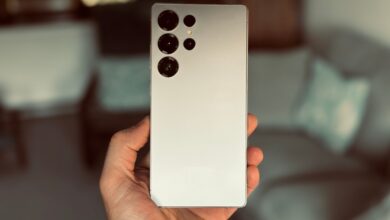Is the Galaxy S26 Ultra Camera Worth the Upgrade or Just Familiar?

Samsung Galaxy S26 Ultra: What to Expect from the Latest Camera Hardware
Recent leaks suggest that Samsung's upcoming Galaxy S26 Ultra may not bring significant changes to its camera setup. According to insider information, the new model is likely to retain most of the rear sensors found in its predecessor, the S25 Ultra. The only notable change appears to be a switch in the 3x telephoto lens.
Details from Leaks
The leaker known as chunvn888 has shared insights indicating that both the primary and 5x telephoto sensors will remain unchanged from last year’s model. The 3x telephoto sensor is set to transition from a 10MP unit to a newer 12MP S5K3LD sensor, which maintains the same physical dimensions as its predecessor.
As for aperture specifications, those details are still under wraps. If Samsung decides to widen the apertures on both the main and 5x lenses, we coudl see some improvements in low-light performance thanks primarily to software enhancements.
The Sensor Breakdown
The leaked specifications for the Galaxy S26 Ultra reveal:
- 200MP HP250MP JN3 ultrawide
- 12MP S5K3LD for 3x telephoto
- 50MP IMX854 periscope for 5x zoom
- 12MP IMX874 selfie camera
This means that aside from replacing the traditional 10MP sensor with a newer version at 12MP, everything else remains consistent with what was offered in last year's model.
The importance of Camera Upgrades
This information holds significance because many consumers base their purchasing decisions on camera capabilities. If most of this hardware feels familiar,potential buyers might view it as more of an incremental update rather than a groundbreaking release—despite any software improvements that may enhance performance.
A similar-sized swap for the new 12MP sensor suggests that portrait shots and indoor zoom images will likely maintain comparable detail and noise levels as seen with previous models. Should wider apertures be introduced, they might provide slight enhancements but are unlikely to make dramatic differences—especially when capturing moving subjects.
Pushing Boundaries with Software Enhancements
The real advancements could come through improved multi-frame blending techniques and tone mapping features. While these methods can enhance image quality significantly, they often cannot compete with larger sensors when it comes down to capturing motion or fine details during mid-zoom shots compared against top-tier smartphone cameras available today.
Tweaks in Video Capabilities
Samsung also seems focused on refining video recording options by introducing new APV HQ (High Quality) and LQ (Low Quality) settings aimed at balancing video quality against file size requirements. This adjustment allows users more flexibility depending on their storage needs without sacrificing to much visual fidelity.
Your Expectations Matter!
If you were anticipating drastic changes or major upgrades in photography capabilities with this latest release, it’s wise to temper your expectations accordingly. While it's expected that photos taken by the Galaxy S26 Ultra will still look notable overall due largely due familiarity within its hardware setup; daily results may closely resemble those captured by last year’s device instead of showcasing revolutionary advancements.
A Closer Look at Low-Light Performance
The portraits taken using this new configuration at a distance of three times optical zoom could yield results similar enough compared directly against those produced by its predecessor—the S25 Ultra—given how closely matched their respective sensors are sized-wise too!
“If you shoot video often,” says one tech enthusiast,” these new APV modes should help balance out quality versus storage space.”
Your Next Steps: What Comes After?
Keen observers should keep an eye out for final specifications along with real-world testing outcomes once Samsung officially announces them! If wider apertures alongside enhanced processing power get confirmed later down-the-line; then perhaps modest gains can still be achieved even if much about this phone feels familiar already!
- Aperture values: Watch closely regarding main lens adjustments along side any stabilization tweaks made throughout various modes available now too!
- Pursue Testing: Put these newly introduced APV settings through rigorous tests involving rolling shutter effects alongside heat management issues plus low-light noise challenges encountered frequently during usage scenarios like night-time street photography sessions etc…
And don't forget! NoveByte might earn a little pocket change when you click on our links, helping us keep this delightful journalism rollercoaster free for all! These links don’t sway our editorial judgment so you can trust us. if you’re feeling generous support us [here](https://amzn.to/4kJuinD)!





